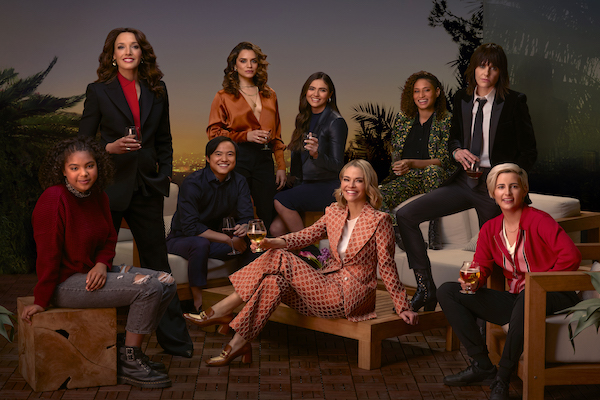The L Word: Generation Q is not just for Gen Z
I remember where I was when the first episode of The L Word aired back in January 2004—back in the days when we gathered around the TV (at the home of whoever had Showtime) with friends and chosen family to host watch parties.
Little did I know at the time just how ground-breaking the series would become. All I knew was it was the first time I’d ever seen characters whose stories mirrored my own. At the time, I was married to my college boyfriend, and we’d just had a child and were on the brink of a divorce. Seeing the challenges that Jenny faced as she slowly discovered the truth of her sexual identity was heartbreaking and equally inspiring for me.
The mark of a great show is one where the characters are not only well-written but also deeply relatable. I watched every episode of The L Word and, when the show ended, rushed out to purchase the box sets of DVDs so I could continue connecting with some of the best characters to grace the screen. Even with my deep admiration for The L Word, something was always missing. Diversity and the representation of characters of color and storylines centered around the unique experiences of being both BIPOC and part of the LGBTQ+ community.
After years of wishing, waiting, and wondering, in early 2019, Showtime announced The L Word: Generation Q, promising new stories, connections, and of course, new characters. I was eager to see which of my favorite OG characters from The L Word would be returning. Once I saw the first billboard with Jennifer Beals (Bette), Katherine Moennig (Shane), and Leisha Hailey (Alice), I was sold. Within minutes of the first episode in season one of Generation Q, I immediately recognized the intentional inclusion of characters not only diverse in race and ethnicity but diversity in their expression of queerness.
As a long-time fan of the The L Word universe, I am pleased to see a fully expressive variety of queer characters’ stories exposed with emotional detail. The show addresses profoundly complex subject matter such as alcoholism, queer parenting, and the nuances of relationships across the spectrum of what queer love looks like. The portrayal of intergenerational relationships within the queer community is essential. Often in our communities, once the “party phase” ends, we struggle to find ways to connect with the next generation of baby queers that are seeking connection.
The L Word viewers were beginning to wonder if the “diversity conversation” had made its way into the writers’ rooms. The L Word: Generation Q is doing several things right, particularly the intentional attention to drawing the audience’s awareness to the highlights and heartbreaks our community is experiencing.
We all have stories to tell, and within our stories are essential lessons about equality, diversity, and inclusivity. The show reminds viewers that being queer is not a monolithic existence. Our unique stories are part of the collective experience, and the show is creating a cultural archive for generations to come.


